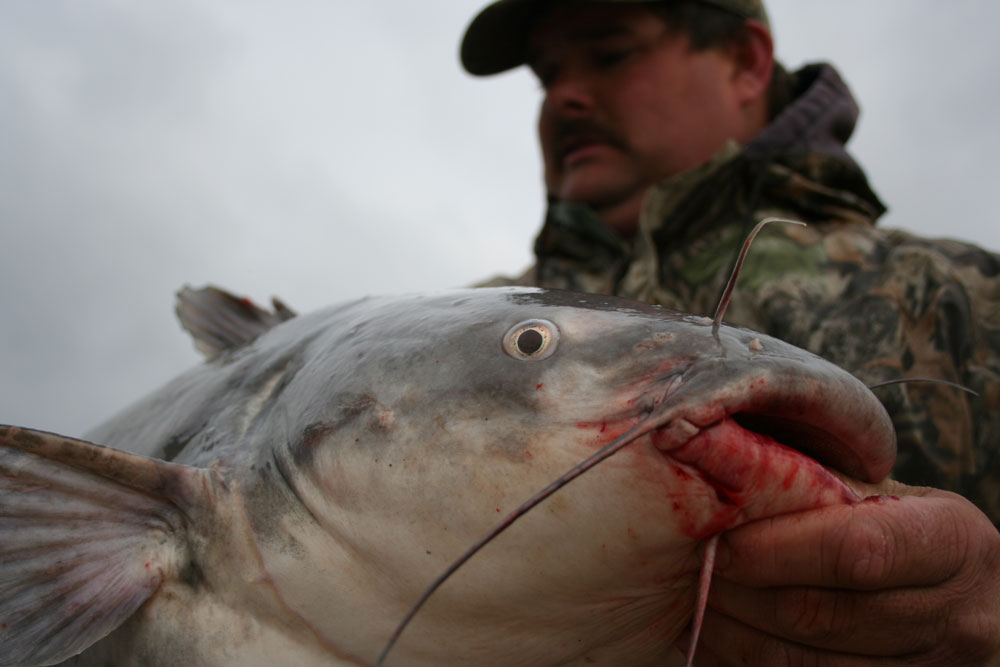Blue catfish have been present in Virginia’s fresh and tidal waters for years, and now this species has made its way to the Maryland tributaries of the Chesapeake. Wherever you may live, blue cats presents an unusual opportunity if you want to target utterly gigantic freshwater (mostly) fish. Virginia’s current state record is a shocking 143 pounds. And Maryland’s record, though barley over half that figure, is still a whopping 84 pounds. That record’s sure to fall sooner rather than later, with blue cats constantly extending their range and population numbers.

To target blue catfish, you’ll want to look for some specific conditions: tidal creeks that feed tributaries, with significant channels or holes, are a good starting point. Depths of at least 10’ or 12’ are the minimum, and 15’ to 25’ holes surrounded by muddy bottoms in the five to 10’ range are prime. Your other option is to target them in lakes, like Buggs Island Lake, where that enormous Virginia state record came from. But do your research; blue catfish aren’t found in all of the freshwater lakes and rivers in the region.
To Get The Blue Catfish Bite
- - You’ll want to use a bait that has plenty of stink. Cut herring, mud shad, or menhaden fits the bill perfectly.
- - Some anglers swear by commercially made stink-baits, and others by chicken livers.
- - Whatever bait you choose, you’ll want to keep it dead on bottom. You can accomplish this by using a regular top-and-bottom rig, but a leader rigged through an egg sinker works better, since it allows you to let the fish eat for a moment or two without feeling any resistance from the lead.
- - Tie up a three-foot leader of 50 pound test line, with a swivel on one end and a hook on the other. The appropriate hook size is 8/0 to 10/0, and circle hooks are generally considered top-notch when targeting big blue cats.
- - Most anglers fan-cast a number of rods, and leave them in rodholders with the reels in freespool and the clickers on. When a fish takes the bait, engage the reel and slowly apply tension so the circle hook does its job.
There’s some specialized gear you’ll want to have on hand when dealing with big cats. Toss a pair of thick leather work gloves into the boat so you can hold these slime balls firmly, without getting barbed in the hand. Be very careful during the landing and un-hooking stages, as the barbs on these fish are seriously dangerous. Puncture wounds caused by them often become infected, and are always painful. Make sure you have a pair of needle-nose pliers onboard as well, to assist in getting the hooks out.
Warning: those big blues tend to collect mercury in their bodies, and in many areas, large specimens aren’t safe to eat—check local advisories before you keep anything meant for the table.